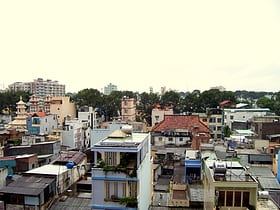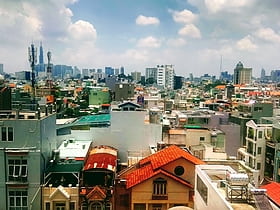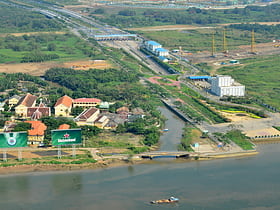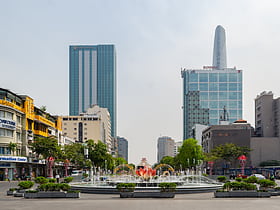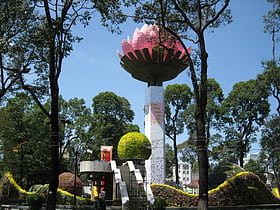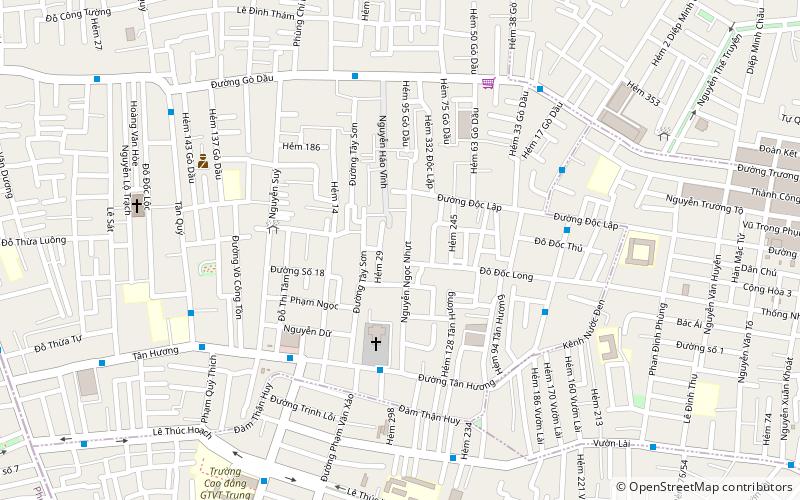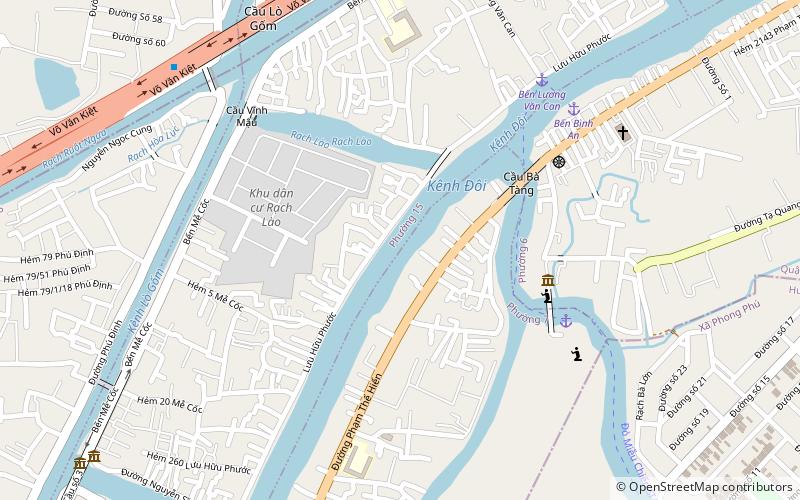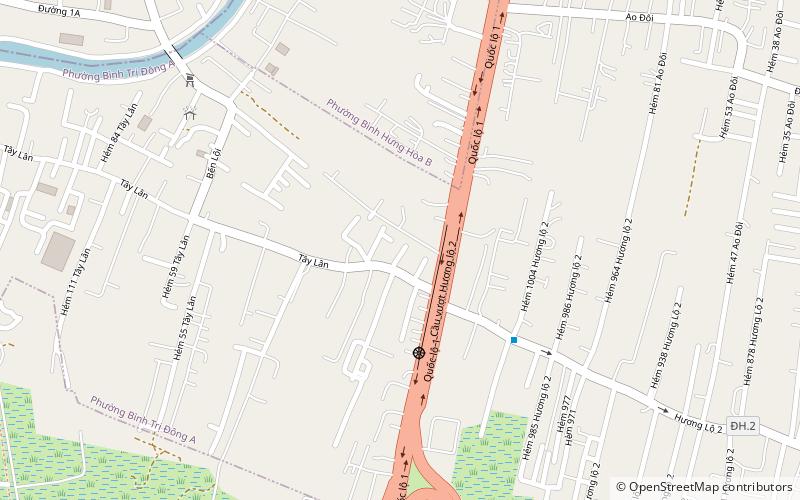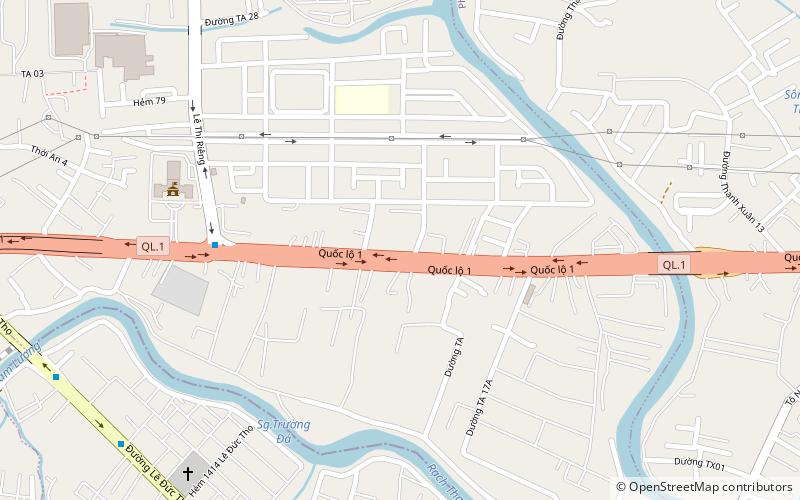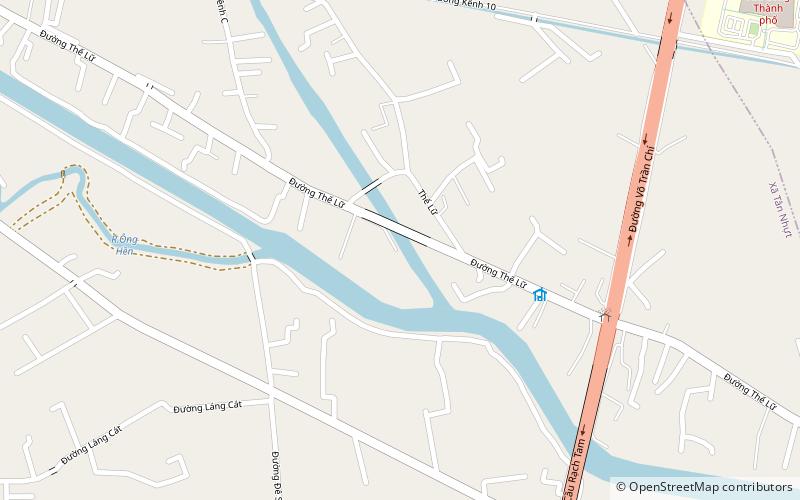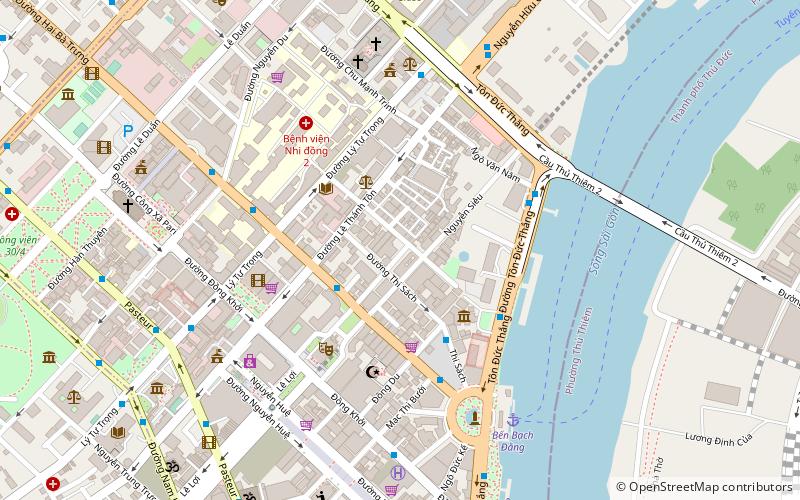Ho Chi Minh City: Neighbourhood
Places and attractions in the Neighbourhood category
Categories
- Temple
- Shopping
- Museum
- Shopping centre
- Neighbourhood
- Sacred and religious sites
- Amusement park
- Amusement
- Buddhist architecture
- Universities and schools
- Skyscraper
- Bridge
- Park
- Church
District 5
District 5 is an urban district of Ho Chi Minh City, the largest city in Vietnam. The Chinese community accounts for a significant population in this district. There are several hospitals, high schools and universities in this district. As of 2010 the district had a population of 174,154 people. The district covers an area of 4.27 km².
Bình Thạnh District
Bình Thạnh is a district of Ho Chi Minh City in Vietnam. As of 2017, the district had a population of 490,618 and a total area of 21 km2. The name of the district was formed from the names of two wards in the old Gò Vấp district, Bình Hòa and Thạnh Mỹ Tây.
District 1
District 1 is the central urban district of Ho Chi Minh City, the largest city in Vietnam. With a total area of 7.7211 km² the district has a population of 204,899 people as of 2010. The district is divided into 10 small subsets which are called wards.
District 3
District 3 is an urban district of Ho Chi Minh City, the largest city in Vietnam. Together with District 1, District 3 is considered the bustling heart of the city, with a multitude of businesses, religious sites, historical buildings and tourist attractions.
Tân Bình District
Tân Bình is an urban district of Hồ Chí Minh City, Vietnam. The city's international airport is situated in the district. It consists of 15 wards, from Ward 1 to Ward 15. It occupies 22.43 km2. In the 2019 census, Tân Bình district has a population of 474,792 people.
District 7
District 7 is an urban district of Ho Chi Minh City, the largest city in Vietnam. As of 2010, the district had a population of 274,828 and an area of 36 km².
Gò Vấp District
Gò Vấp is a district of Ho Chi Minh City. Since the 80s, it has undergone significant urbanization. It is more populous than most of the other districts. A high urbanization rate has made Gò Vấp become one of the three districts that has high population growth in the city.
Tân Phú District
Tân Phú is an urban district of Hồ Chí Minh City, Vietnam. As of 2010, the district has a population of 407,924 and covers an area of 16 km². The district is divided into 11 small subsets which are called wards.
District 8
District 8 is an urban district of Ho Chi Minh City, the largest city in Vietnam. As of 2010, the district had a population of 418,961 and an area of 19 km². It is divided into 16 small subsets called wards, numbered from Ward 1 to Ward 16.
Phú Nhuận District
Phú Nhuận is one of the nineteen urban districts in Ho Chi Minh City, Vietnam. It is densely populated, with 180,100 inhabitants in an area of just 4.88 km2. Phú Nhuận district is sometimes considered the center of Ho Chi Minh City due to its central location from all of the surrounding districts.
Bình Tân District
Bình Tân is an urban district of Ho Chi Minh City, Vietnam, and is known as a large inner city of migrant workers. In 2010 the district had a population of 611,170, in an area of 52 km². The name is a combination of Bình Hưng Hoà, Bình Trị Đông and Tân Tạo.
District 12
District 12 is an urban district of Ho Chi Minh City, the largest and most populous city in Vietnam. As of 2010, the district had a population of 427,083. The district covers an area of 53.0 km². The district is divided into 11 small subsets which are called wards.
Bình Chánh District
Bình Chánh is an rural district in the southwest of Ho Chi Minh City in Vietnam. High urbanization rate has made Bình Chánh become one of a high population growth districts in the city. As of 2018, the district had a population of 680,000. It covers an area of 253 km2. The district capital lies at Tân Túc.
Cheonghaejin
Cheonghaejin was a major military headquarters and trading hub located on Wando island, South Jeolla province of South Korea, and established by Korean general Jang Bogo in 828 ACE during the Silla kingdom period. It traded mainly with Tang Dynasty China and Japan, and served as a military hub to combat various pirate factions.
Map

